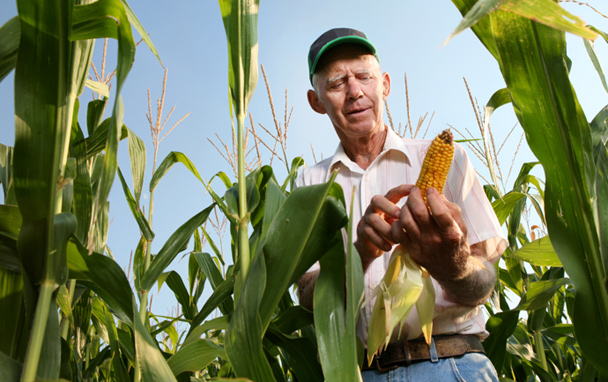Do you know where your dinner comes from—really comes from? These days, buying your corn or kale at the farmers’ market is no guarantee against the creep of Big Agriculture. More and more seeds sold to farms in the United States come from huge companies like Monsanto, made famous by the 2008 Robert Kenner documentary, Food, Inc., for its dominant role in American agriculture. And at the core of the controversy surrounding Monsanto and other “Big Ag” companies is their role in the spread of genetically modified food products. Genetically modified organisms (GMOs) are strains of vegetables and grains that have been altered by genetic engineering, meaning that specific genes, and the traits they carry, are transferred from one organism to another. These transferred traits are intended to make for stronger, more resilient plants—for example, Monsanto has engineered seeds that are resistant to its own potent weed killer, Roundup.
Just how big is Big Ag? Big enough that 85 percent of the corn grown in this country is now genetically modified, as is 91 percent of soy. And it’s not only the corn on the cob you’re having with your summer picnic that may have come by way of a seed lab—it’s the corn- or soy-based derivatives found in a huge range of cooking staples and tabletop condiments. In fact, it’s estimated that 70 percent of processed foods in American supermarkets now contain genetically modified ingredients, which is alarming to environmentalists, who point out that no one knows the long-term health ramifications of consuming lab-created crops, because GMOs have only been on the market for less than 20 years. The truth is, no matter how “natural” you try to go with your diet, unless a food carries the USDA-approved 100 percent organic label, you are probably consuming GMOs without knowing it. Big Ag rules the United States—and rapidly, the world at large.
Since 1997, Monsanto has filed and won 144 lawsuits against organic growers it claims were illegally using their seeds. For their part, the farmers insist they do not want Monsanto seed anywhere near their organic crops (which cannot be sold at market as organic if seed analysis shows them to have been tainted with GMO seed). But because the vast majority of farms in America now use GMO seed, and because organic and conventional farms frequently sit side by side in agricultural regions, it is all too easy, farmers say, for winds to carry seed from one side of the proverbial fence to the other. Add to that the rain runoff that intermingles soils from neighboring properties, and it has become nearly impossible for small organic farms to fend off an “invasion” of GMO seed.
In a classic David and Goliath confrontation, the Organic Seed Growers & Trade Association (OSGATA), acting on behalf of 60 family farmers, seed companies, and organic agricultural organizations, is gearing up for the next round in an ongoing legal battle with Monsanto. As of March 28, OSGATA has filed an appeal in an effort to reinstate a federal class-action suit dismissed in February by Judge Naomi Buchwald of the U.S. District Court in New York City. The original action, filed in March 2011, in a nutshell sought to preemptively force Monsanto into an agreement not to sue organic farmers for patent infringement if Monsanto seed were to be found among their crops.
Good Fences
“There’s a saying that good fences make good neighbors,” says Jim Gerritsen, the president of OSGATA. Gerritsen has been farming organic potatoes in a small town in northern Maine, 6 miles south of the Canadian border, for more than three decades. “If I’m growing clover at my farm, and your farm next door has cattle, it’s your responsibility to build a strong enough fence to keep your cows from coming over and eating my clover. It is Monsanto’s responsibility to ensure their seed doesn’t contaminate the organic farms.”
As if the threat of losing their organic classification were not enough, organic farmers are faced with another headache: Monsanto doesn’t want people growing crops from its seeds unless they’ve paid to use them. Thus the 144 patent-infringement suits—and victories—in the past 15 years against growers whose crops reveal traces of the company’s seed. In the case of OSGATA v. Monsanto, organic farmers hoped to head off at the pass not only this legal threat but, most significantly, what they feel is the inevitable future of their industry: more and more crops becoming tainted with GMO seeds. The more farms that start using Monsanto seed (as has been the trend in the past two decades), the greater the odds of surrounding farm contamination, Gerritsen points out.
In her February decision, Judge Buchwald was not sympathetic. “[The] plaintiffs’ letter to defendants seems to have been nothing more than an attempt to create a controversy where none exists,” she ruled. “[The] plaintiffs’ argument is baseless and their tactics not to be tolerated.” Though OSGATA is taking its case to the U.S. Court of Appeals, the organization faces an uphill battle: It is hard to press charges for an offense not yet committed.



 Pinterest
Pinterest


